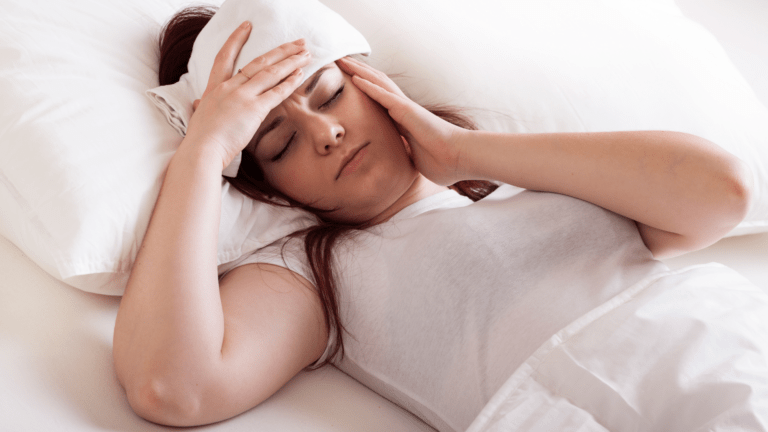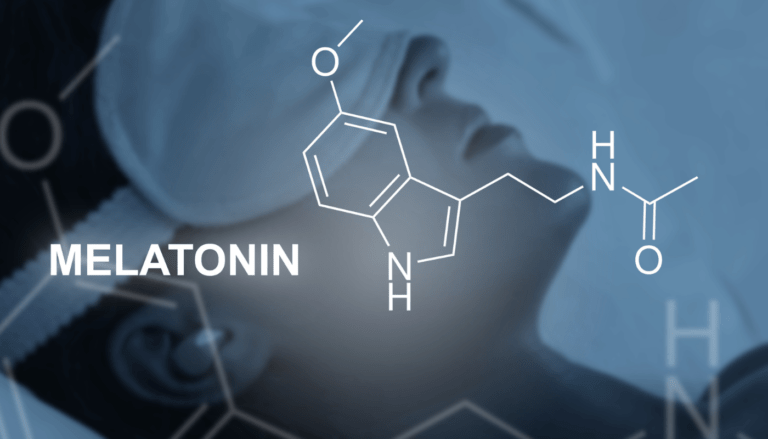When it comes to diagnosing sleep apnea, many people assume that you need to spend a night in a sleep clinic hooked up to monitors. However, that’s not the only way to test for sleep apnea. Contrary to popular belief, an at-home sleep study is not only possible but also highly accurate for diagnosing sleep apnea. Plus, it’s a lot more comfortable because you can do it in your bed.
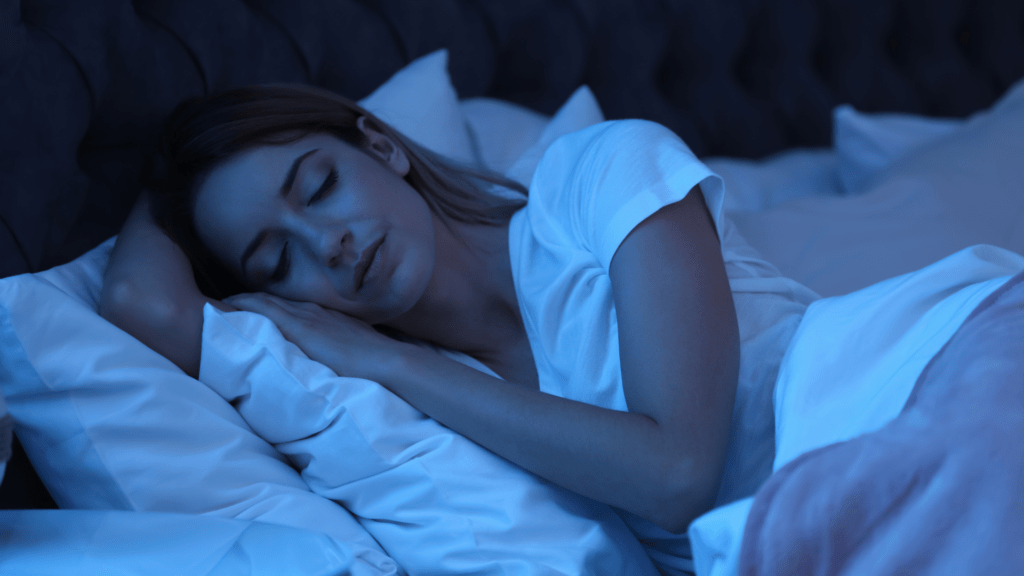
Let’s dive into what an at-home sleep study is, how it works, and whether it’s a good option for you:
Understanding the Importance of Sleep Apnea Testing
Many people overlook the importance of getting tested for sleep apnea, but it’s a serious condition that can affect your overall health. Left untreated, sleep apnea can lead to more severe issues like heart disease, high blood pressure, and stroke. That’s why diagnosing it early with a sleep apnea test is essential.
So, why is sleep apnea testing so crucial?
If you’re constantly feeling tired, snoring loudly, or experiencing pauses in breathing while asleep, it might be time to consider a sleep apnea home test kit. Whether you’re looking for the best at-home sleep apnea test or trying to figure out how to get diagnosed with sleep apnea, it’s important to know that sleep apnea help is more accessible than ever through an at-home sleep study.
The great thing about sleep apnea studying at home is that it’s a convenient way to check for this condition without spending the night at a clinic. You’re able to sleep in your bed while wearing a small monitor, which tracks your breathing, oxygen levels, and other important data.
What is an At-Home Sleep Study?
An at-home sleep test is a simplified version of the traditional sleep study you would take in a lab. It’s designed to detect common sleep disorders, particularly sleep apnea. The test involves a few key components that monitor your breathing patterns, oxygen saturation, and heart rate while you sleep. The setup usually includes sensors that you wear overnight, such as a small device placed on your chest and a pulse oximeter attached to your finger.
The Process of an At-Home Sleep Study
The process is straightforward:
- You receive a sleep apnea home test kit from your doctor or an online provider.
- On the night of the test, you set up the equipment (don’t worry, it’s easy).
- As you sleep, the equipment monitors your breathing patterns, oxygen levels, and more.
- You return the device or send the data back for evaluation.
It’s a simple and convenient way to diagnose sleep apnea, and many people prefer it because of its comfort and ease of use.
Equipment Used in At-Home Sleep Studies
When taking an at-home sleep test, you’ll use minimal equipment compared to an in-lab study. The typical tools used are:
- Nasal cannulas to measure airflow through your nose.
- Chest straps to measure breathing effort.
- A pulse oximeter to monitor your blood oxygen levels.
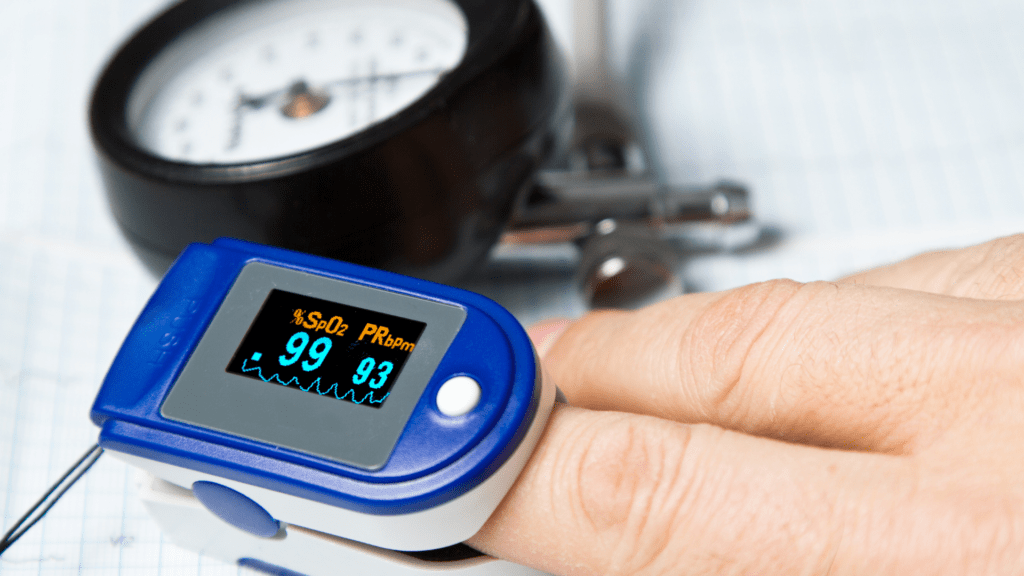
In some cases, advanced tests also include a sleep apnea monitor to track additional sleep data. This simplicity allows you to carry out the test in your natural sleep environment, making it an attractive alternative to spending a night at a clinic.
Are At Home Sleep Studies Accurate?
This is probably the biggest question on your mind—are at-home sleep studies accurate?
In short, yes! While they might not measure all the same data points as an in-lab study, at home sleep studies are highly accurate for detecting moderate to severe sleep apnea. They are specifically designed to catch irregular breathing patterns and drops in oxygen levels, the primary signs of sleep apnea.
For most people, an apnea home test is all they need to diagnose sleep apnea. However, if you have other complicated sleep disorders, a more comprehensive in-lab study might be recommended.
Benefits of an At-Home Sleep Study
An at-home sleep study offers convenience, allowing you to sleep in your own bed while gathering accurate data on your breathing and sleep patterns. It’s also cost-effective and less intrusive compared to in-lab testing, making it a popular choice for diagnosing sleep apnea.
Convenience
You get to sleep in your bed! There’s no need to go to a clinic or spend a night away from home.
Cost-Effective
In many cases, an at-home sleep study is more affordable than an in-lab study.
Quick Results
You can get results faster than with traditional methods, meaning you’ll get diagnosed and treated sooner.
At-home sleep tests are a convenient and effective way to diagnose sleep apnea without needing to go through the hassle of staying overnight in a clinic. Whether you’re considering the cpap test at home or simply looking for the best at-home sleep apnea test, it’s clear that diagnosing sleep apnea at home is more accessible and accurate than many believe. The key is to start the process early so you can find the right treatment and get your sleep—and your health—back on track.
Debunking a Common Myth: Home Sleep Tests Aren’t Effective
One common misconception about at-home sleep tests is that they aren’t as effective or reliable as tests done in a sleep clinic. Many people believe that because you’re not in a controlled environment, the results aren’t as accurate. This couldn’t be further from the truth. In reality, at-home sleep studies are proven to be highly accurate for detecting sleep apnea in the comfort of your own home. Whether you opt for the best at-home sleep apnea test or a simpler apnea home test, the results are reliable enough to make an accurate diagnosis.
Let’s break down how these tests work and what the results tell you about your sleep.
How At-Home Sleep Tests Work to Diagnose Sleep Apnea
An at-home sleep study uses several tools to monitor your sleep and diagnose sleep apnea. These tests are designed to measure key indicators like your breathing patterns, oxygen levels, and heart rate. While it may seem complex, the process is pretty simple and user-friendly.
The Key Components of an At-Home Sleep Test
When you take an at-home sleep test, you’re using basic but effective equipment:
Breathing Sensors
Breathing Sensors are usually small tubes that fit in your nose (similar to oxygen tubing) and measure your airflow.
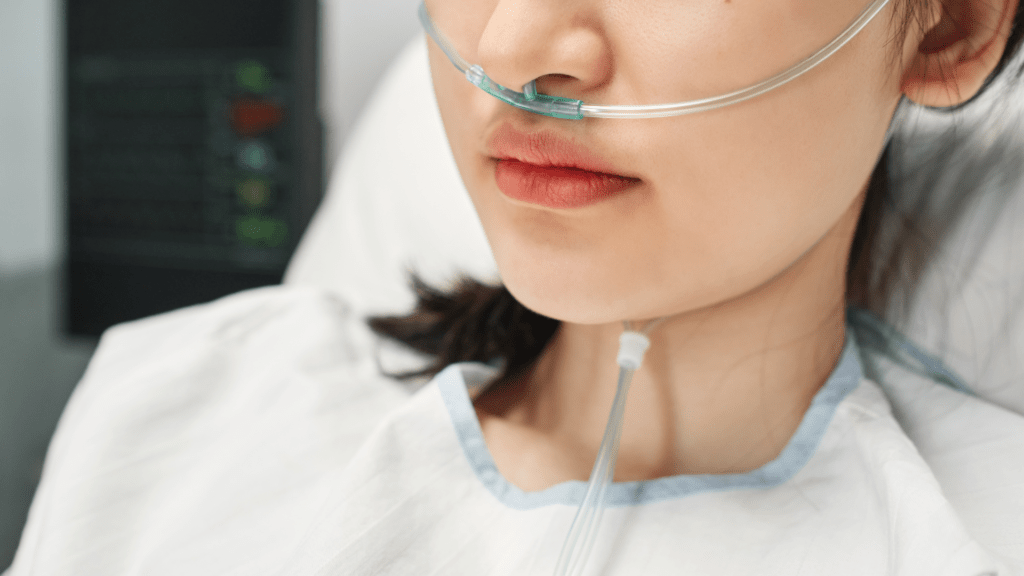
Chest Band
Chest Band monitors how much effort you’re putting into breathing while you sleep.
Pulse Oximeter
This tiny device clips onto your finger to measure your blood oxygen levels during sleep.
Each of these tools works together to give a complete picture of your sleep patterns.
The Testing Process: Can You Do a Sleep Study at Home?
Yes, you absolutely can. A CPAP test at home or even a sleep apnea test at home is not only possible but is now a preferred option for many people. The process usually goes like this:
You pick up or receive a sleep apnea home test kit from your healthcare provider or a testing company. Then set up the equipment yourself, following simple instructions, and wear this equipment while you sleep in your bed.
The next morning, you either return the device or send the data for analysis.
Once the data is reviewed, your doctor will use it to determine whether you have sleep apnea and how severe it is. This data can even help with sleep apnea treatment recommendations, such as whether you need a CPAP machine.
Are At Home Sleep Studies Accurate? Understanding Their Reliability
Another big question many people have is, are at-home sleep studies accurate? Yes, they are. While they might not capture every detail that an in-lab study would, at-home sleep studies are highly effective for diagnosing obstructive sleep apnea, especially in moderate to severe cases. The tools used in an at-home sleep test are specifically designed to monitor the key indicators of sleep apnea, like pauses in breathing and drops in oxygen levels.
Comparing At-Home vs In-Lab Sleep Studies
You might be wondering, “If at home sleep studies are so accurate, why do people still go to a clinic for a sleep study?”
Here’s the deal:
- At-home sleep studies focus primarily on diagnosing sleep apnea. If you have other sleep disorders, like restless leg syndrome or insomnia, an in-lab test might be more appropriate.
- In-lab sleep studies also track more metrics, like brain waves and leg movements, which can help identify more complex sleep disorders.
However, for most people who just need to diagnose sleep apnea, an at home sleep study is more than enough.
Can You Pass a Sleep Apnea Test?
Now, you may have heard people ask, does anyone ever pass a sleep apnea test? The short answer is that sleep apnea tests aren’t something you “pass” or “fail.” The results simply indicate whether or not you have sleep apnea and how severe it is. So, instead of thinking of it as a test to pass, it’s better to think of it as a tool to understand your health.
If your test shows you don’t have sleep apnea, great! If it shows that you do, the next step is to work with your doctor on a mild sleep apnea treatment or whatever treatment is best for your condition.
What Your At-Home Sleep Study Results Mean
After you’ve completed the take-home sleep study, the data is sent for analysis, and you’ll receive the results shortly after. These results will tell you whether you have sleep apnea, and if so, how severe it is. This is where the terms “mild,” “moderate,” or “severe” come into play, indicating how often your breathing is interrupted during sleep.
Mild Sleep Apnea
You have fewer than 15 breathing interruptions per hour.
Moderate Sleep Apnea
You have 15-30 breathing interruptions per hour.
Severe Sleep Apnea
You have more than 30 interruptions per hour.
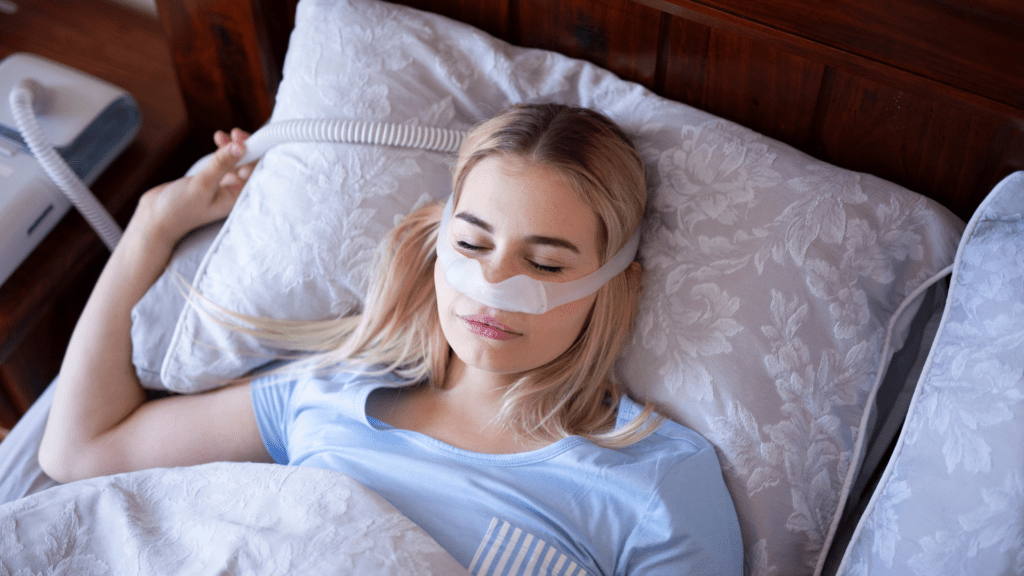
Once you know the severity of your sleep apnea, your doctor will guide you through treatment options, which can include CPAP therapy or lifestyle changes.
At-home sleep tests are an easy, accurate, and convenient way to diagnose sleep apnea. They give you the freedom to take the test in the comfort of your own home while providing reliable data that doctors use to diagnose and treat sleep apnea. Whether you’re looking into a CPAP test at home or just want to understand how to get tested, these tests are an essential tool in improving your sleep and overall health.
Debunking the Myth: Is Sleep Apnea Curable?
One of the most common beliefs about sleep apnea is that it’s completely curable. However, the reality is more nuanced. Sleep apnea isn’t something that just goes away, but it is manageable. Many people are under the impression that if they change their lifestyle or lose weight, their sleep apnea will vanish completely. While weight loss and other treatments can reduce symptoms, sleep apnea treatment usually involves ongoing management, such as using a CPAP machine or other medical devices.
Let’s dive deeper into some of the most effective ways to manage and treat sleep apnea.
Mild Sleep Apnea Treatment: What Are Your Options?
If you’ve been diagnosed with mild sleep apnea, you might not need aggressive treatment like a CPAP machine. There are several effective ways to treat mild sleep apnea that can significantly improve your sleep quality and overall health.
Lifestyle Changes
The first step in treating mild sleep apnea often involves making lifestyle changes. These are simple yet impactful adjustments you can make to reduce the severity of your condition. Common suggestions include:
Weight Loss
Carrying extra weight, especially around the neck, can worsen sleep apnea. Even a small amount of weight loss can make a difference.
Sleeping Position
How you sleep matters. For many people with mild sleep apnea, sleeping on their side instead of their back can improve airflow.
Avoiding Alcohol
Alcohol can relax the muscles in your throat, which may exacerbate sleep apnea. Cutting back or eliminating alcohol, especially before bed, is often recommended.
These lifestyle adjustments might not “cure” sleep apnea, but they can significantly reduce symptoms and improve sleep.
Oral Appliances
Another option for mild sleep apnea treatment is using an oral appliance, sometimes called a dental device. These are designed to keep your airway open while you sleep by repositioning your jaw or tongue. These devices are non-invasive, easy to use, and a great alternative for people who find CPAP machines uncomfortable.
Your dentist or sleep specialist can help fit you with the right oral appliance based on your specific needs.
Sleep Apnea Treatment Options: From CPAP to Surgery
For those with moderate to severe sleep apnea, more intensive treatment options are usually required. While mild sleep apnea can often be managed with lifestyle changes and oral appliances, severe cases usually need medical devices or surgical interventions.
CPAP Therapy
The most common and effective treatment for sleep apnea is CPAP therapy (Continuous Positive Airway Pressure). This involves wearing a mask over your nose (or nose and mouth) while you sleep, connected to a machine that delivers a steady stream of air. This airflow keeps your airway open, preventing the pauses in breathing that characterize sleep apnea.
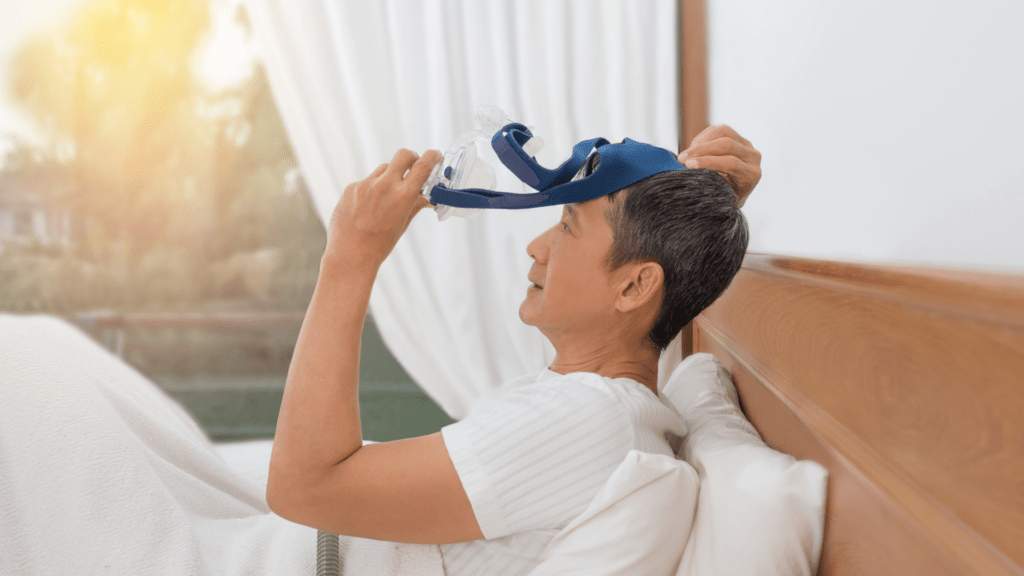
Many people wonder, “Can you do a CPAP test at home?” The answer is yes. A CPAP test at home can help determine the right pressure settings for your machine and ensure it’s working properly. Once you’re set up with the right pressure, CPAP therapy can provide immediate relief and help you get a better night’s sleep.
Surgery for Sleep Apnea
If CPAP therapy doesn’t work or you’re unable to tolerate it, surgery might be an option. Surgical treatments for sleep apnea aim to remove or reposition tissues that are blocking your airway. Some common surgical procedures include:
Uvulopalatopharyngoplasty (UPPP)
Removes excess tissue from the throat.
Genioglossus Advancement (GA)
Repositions the muscles that control the tongue.
Maxillomandibular Advancement (MMA)
Moves the upper and lower jaw forward to open up the airway.
Surgery is typically seen as a last resort when other treatment options fail, but it can be life-changing for people with severe sleep apnea.
Alternative Devices: The Sleep Apnea Monitor
For some people, a CPAP machine might not be suitable. In these cases, there are alternative devices that can help, such as a sleep apnea monitor. These monitors are typically worn like a watch or placed on your bedside, and they track your sleep patterns, breathing, and oxygen levels throughout the night. While they don’t treat sleep apnea, they can provide valuable data to your doctor about how well your current treatment is working or if adjustments need to be made.
Managing Sleep Apnea for Better Sleep
Whether you’re looking into mild sleep apnea treatment or considering CPAP therapy, the key to managing sleep apnea is finding a treatment that works for you. There’s no one-size-fits-all solution, but with the right guidance and a combination of lifestyle changes, medical devices, or surgery, you can effectively manage your condition and improve your sleep.
Remember, sleep apnea isn’t curable in the traditional sense, but with the right treatment, it’s manageable, allowing you to live a healthier, more rested life.
Debunking the Myth: Can You Pass a Sleep Apnea Test?
A common misconception about sleep apnea tests is that you can “fail” or “pass” them as if it’s a regular exam. However, the truth is, that these tests aren’t about passing or failing. They’re designed to measure your sleep patterns, breathing, and oxygen levels to determine whether or not you have sleep apnea. So, the goal is not to pass but to get an accurate diagnosis that can guide your treatment.
Now, let’s explore how sleep apnea is diagnosed and what steps you need to take to ensure you get the proper help.
How to Get Tested for Sleep Apnea
Getting tested for sleep apnea is not as complicated as it may seem. There are multiple ways to get tested, ranging from home sleep tests to in-lab polysomnography. Here’s how you can get started.
Apnea Home Test: An Easy and Convenient Option
One of the most common ways to get tested for sleep apnea today is through an apnea home test. These tests are simple, non-invasive, and allow you to sleep in the comfort of your own home while tracking your breathing patterns, oxygen levels, and other sleep data. Many people ask, “Are at-home sleep studies accurate?” The answer is yes, for most cases of obstructive sleep apnea. At-home sleep studies provide reliable results and are often used as the first step in diagnosing sleep apnea.
An at-home sleep test typically involves a device that you wear overnight, such as a chest strap or a finger sensor. The data collected is then analyzed by a sleep specialist, who can determine whether you have sleep apnea. While this method is convenient and effective for most people, in-lab testing may still be necessary in certain situations, especially for complex cases.
In-Lab Polysomnography: The Gold Standard
While home sleep tests are becoming more popular, in-lab polysomnography is still considered the gold standard for diagnosing sleep apnea. This is a more comprehensive test that monitors not only your breathing and oxygen levels but also your brain activity, heart rate, and muscle movements. An in-lab apnea test is usually conducted in a sleep center where you stay overnight.
If you’re wondering, “Does anyone ever pass a sleep apnea test?” the real answer lies in how much information the test provides. It’s not about passing or failing but rather gathering accurate data to diagnose the condition.
Best At-Home Sleep Apnea Test Kits
For those looking for the best at-home sleep apnea test, there are several reliable options on the market. Some of the top-rated sleep apnea home test kits include:
WatchPAT
This test measures oxygen saturation and heart rate, providing a detailed report on your sleep patterns.
ResMed ApneaLink
This device is user-friendly and provides accurate results for obstructive sleep apnea.
Itamar Medical WatchPAT
It’s a more advanced option that measures additional parameters like peripheral arterial tone and heart rate.
These kits can be ordered through your healthcare provider, who will guide you through the process and ensure the results are analyzed properly.
How to Get Diagnosed with Sleep Apnea: Step-by-Step
If you suspect you have sleep apnea, here’s a step-by-step guide to getting diagnosed:
Talk to Your Doctor
The first step is always to consult your healthcare provider. They will ask about your symptoms, such as snoring, gasping for breath during sleep, or daytime fatigue.
Home Test or In-Lab Study
Based on your symptoms, your doctor may recommend an at-home sleep test or refer you to a sleep center for an overnight study.
Analyze the Results
After your test, the data will be analyzed by a sleep specialist who will determine whether you have sleep apnea and the severity of your condition.
Receive Your Treatment Plan
If you are diagnosed with sleep apnea, your doctor will provide a treatment plan. This could include CPAP therapy, lifestyle changes, or even surgery, depending on the severity of your case.
How to Pass a Sleep Apnea Test? Spoiler: It’s Not About Passing
While the idea of “passing” a sleep apnea test may sound appealing, there’s no real way to “pass” or “fail.” The test’s purpose is to provide an accurate diagnosis, so trying to manipulate the results could delay the treatment you need. Instead of worrying about how to pass, focus on providing accurate data by following these tips:
Get a Good Night’s Sleep
Before your test, make sure you’re well-rested so that the results reflect your typical sleep patterns.
Avoid Alcohol and Caffeine
Both substances can interfere with your sleep and may affect your test results.
Sleep in Your Usual Position
If you typically sleep on your back, side, or stomach, do so during the test to ensure the most accurate results.
Remember, the goal is to get the help you need to treat your sleep apnea effectively.
Getting tested for sleep apnea might seem overwhelming, but it’s an essential step toward improving your sleep quality and overall health. Whether you opt for an at-home sleep test or an in-lab study, the important thing is to get diagnosed so you can start your treatment and enjoy better, more restful nights.

